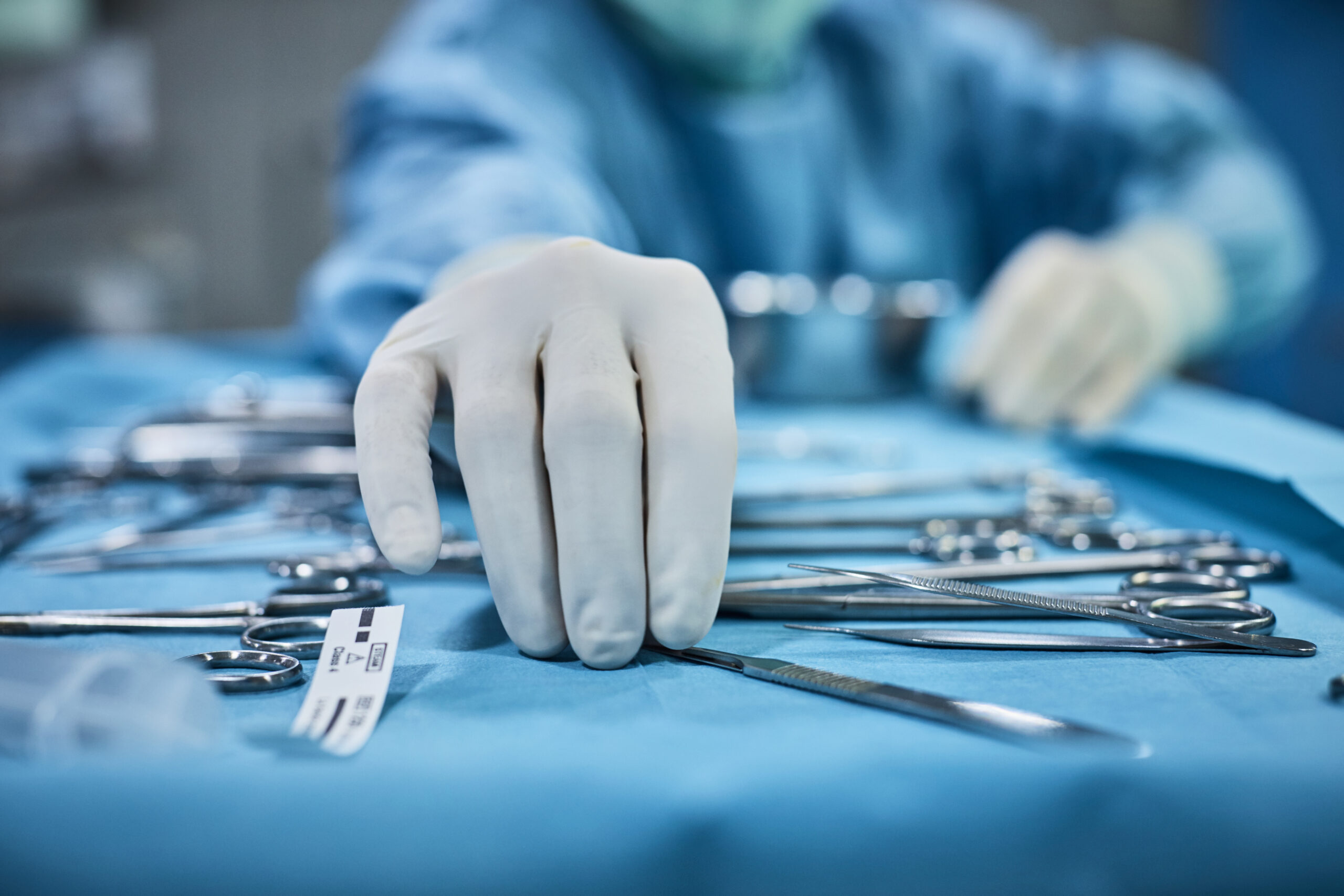Our surgery team at Animal Emergency & Specialty Center (AESC) strives to ensure your pet receives the most advanced and expert care available. We want to minimize your pet’s discomfort, decrease their anesthesia time, and accelerate their recovery. Our accomplished, board-certified veterinary surgeons, and our cutting edge equipment and technology, allow us to offer your pet minimally invasive surgery (MIS), when appropriate.
How is minimally invasive surgery for pets different from regular surgery?
As opposed to a large incision to visualize and access areas of your pet’s body, MIS involves small incisions, typically only about a half inch, through which tiny cameras and instruments are inserted. Endoscopes have a high-definition camera attached to a flexible tube, and arthroscopes contain a similar camera attached to a rigid tube. The cameras convey an image to a screen that allows our AESC surgeons to visualize the area of interest. They also can infuse water or air to the area to improve visualization, as needed. Other instruments can be inserted through similar openings to make incisions, collect tissue samples, and place sutures. Our surgeons have received extensive training in manipulating these instruments to perform many sophisticated surgical techniques.
What advantages do minimally invasive procedures provide my pet?
These cutting edge techniques benefit your pet in numerous ways, including:
- Better visualization — The high-definition cameras transmit close images that our surgeons can view to direct their instruments and techniques. Since cameras can be manipulated around, under, and behind structures, surgeons can often see the area of interest better than if the body cavity were opened with a larger incision.
- Decreased tissue trauma — Traditional surgical techniques require large incisions to gain appropriate access. The much smaller incisions used in MIS result in less tissue trauma. Using small instruments to manipulate the organs and tissue damages them less, and the decreased tissue trauma results in less scarring internally and externally.
- Decreased pain — The smaller incisions and decreased tissue disruption result in less pain for your pet. Since they experience less pain, they will need less pain medication. Our trained AESC pain management experts choose the safest medications possible to alleviate your pet’s pain, but any medication can have side effects. This means that your pet benefits from a shorter medication regimen.
- Decreased recovery time — Your pet’s recovery time will be decreased, since their incisions are small. Internal surgical sites may take longer to heal than external incisions, so always follow the surgeon’s expert recommendations about your pet’s activity restrictions after surgery.

What minimally invasive procedures are available?
Not all surgical procedures can be performed using MIS, but whenever possible, our surgeons employ this method to reduce your pet’s discomfort and recovery time. Minimally invasive procedures include:
- Arthroscopy — A minimally invasive surgical procedure performed on joints, this procedure involves an arthroscope to visualize, diagnose, and treat problems inside almost any joint. Procedures include cartilage flap treatment, bone chip removal, and treatment of intra-articular injuries that involve the shoulder, elbow, carpus, hip, stifle, and tarsal joints. Arthroscopy typically results in less joint pain and stiffness than traditional surgery, and recovery usually takes less time.
- Thoracoscopy — A minimally invasive surgical procedure performed inside the chest cavity, this technique allows our surgeons to visualize organs, take biopsies, and remove masses, without having to cut through the sternum. Procedures that are most commonly performed include removal of mediastinal and pulmonary masses, and creating a pericardial window to prevent fluid accumulation around the heart.
- Laparoscopy — This minimally invasive surgical procedure performed inside the abdominal cavity allows our surgeons to visualize organs, take biopsies, and remove masses or organs without a large abdominal incision. Prophylactic gastropexy can be performed via laparoscopy to prevent gastric dilatation and volvulus (GDV) in dogs. Other procedures include feeding tube placement, spays, castration when a testicle has been retained in the abdomen (i.e., cryptorchid), cholecystectomy, and abdominal lavage for pancreatitis.
Will my pet’s surgical procedure be performed using minimally invasive techniques?
Some procedures are best performed using traditional methods, but when feasible, our surgeons use MIS techniques to lessen your pet’s pain and recovery time. Our experienced veterinary professionals will assess your pet’s condition to determine the best approach for your pet and their overall well-being.
If your family veterinarian has referred you for a consultation with one of our surgeons, , our team at AESC will answer your questions and decide the best surgical technique for your pet. Contact us to schedule an appointment.

